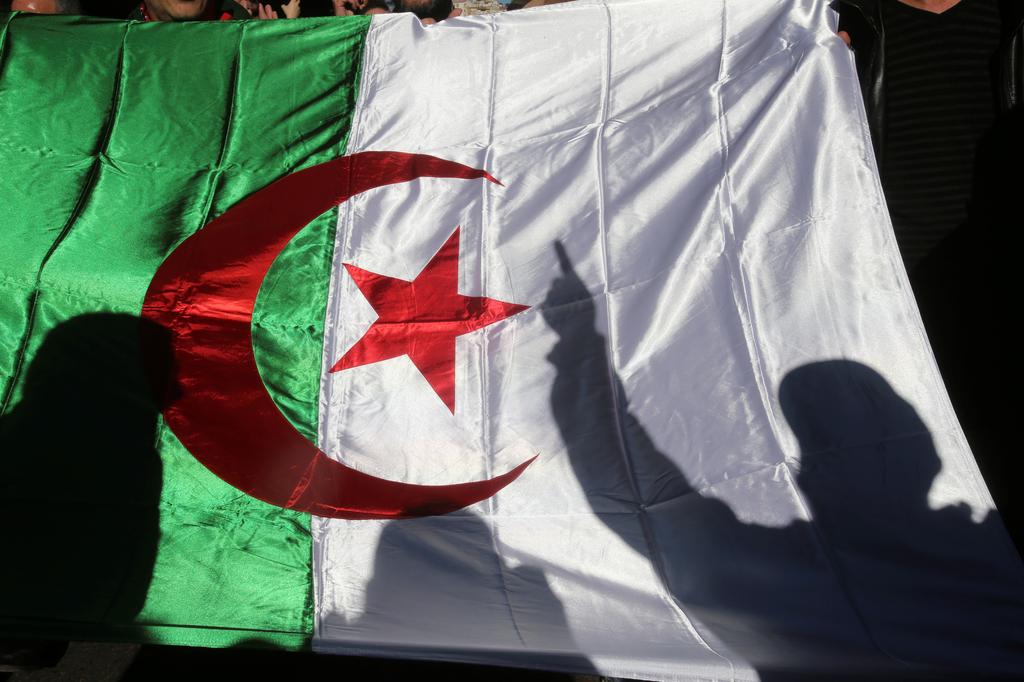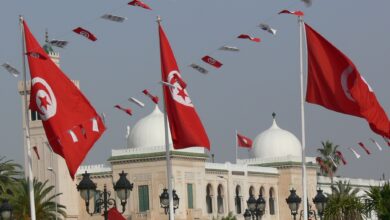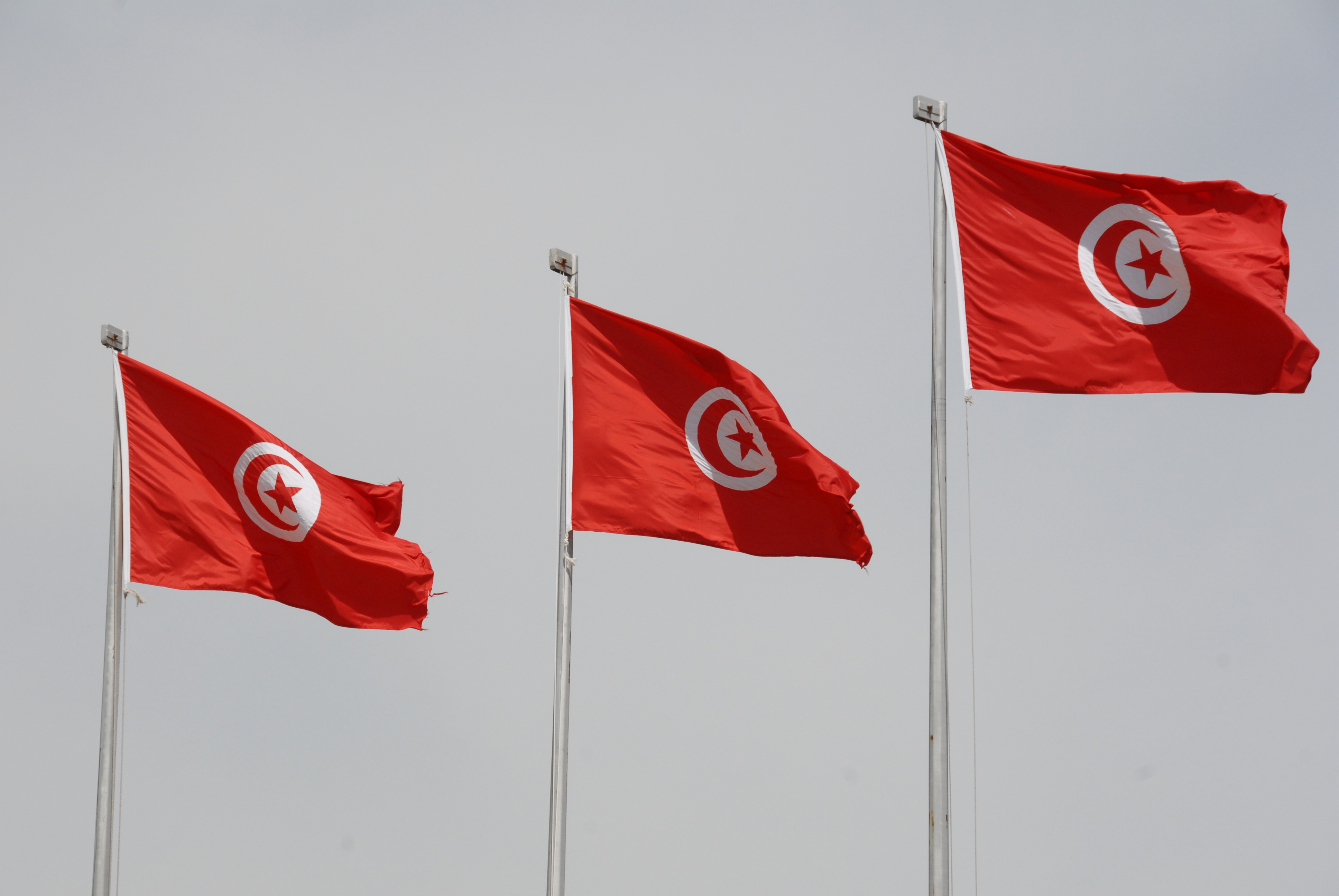It’s difficult to say how it started. For clarity’s sake, let’s begin on 28 November 2011. Enraged at the university’s enforcement of the niqab ban, a group of Salafis took hostage the dean of the College of Letters and Arts at Tunisia’s Manouba University. (Students at Manouba, and at universities around the country, are prohibited by presidential decree from wearing the niqab while in class.)
Protesters, swelling at times to 200, came to the defense of female students wishing to wear the niqab to exams. They leafleted the campus with fliers crying, “Sister, what is preventing you from wearing the niqab?” Leftist students, oftentimes members of the student group Union Générale des Étudiantes (UGET), responded with the familiar cry of the Tunisian revolution, “Get out, get out.”
Campus police, an omnipresent relic of the Zine al-Abidine Ben Ali era, were reintroduced and a great “he said, she said” debate ensued. French professor Habib Mellakh reported being shoved by protesters. The dean, Habib Kazdaghli, now released, was barred entry to his office by protesters. Professors rallied in defense of the niqab ban and questioned if the Salafi protesters were indeed students or outsiders. Salafi protesters continued to demonstrate for the right to wear the niqab and for on-campus prayer rooms.
A week later, the faculty board closed the college. “We reached a stage where we could not negotiate with these people,” stated Dean Kazdaghli.
The new year came and went, and not much improved on the campus. On 17 January, students wearing the niqab began a hunger strike in an attempt to have their demands met. They bemoaned the university’s flippant approach to their cause and accused the faculty of verbal abuse. Imen Ben Rouha, one of the five students on the hunger strike, said, “We are ready to sacrifice our lives for this cause. This is our right and we are open to any dialogue that can lead to a solution to this case.”
Hunger strikes ended, and the end of February ushered in faculty strikes. On 28 February, a niqab-wearing student attempted to enter a classroom. Following the instructions of the university’s scientific council, the professor barred the student from entering class. As the student called upon support from Salafis both at and around the university, the faculty at the College of Letters and Arts rallied in support of their colleague and began their strike.
“Salafis are not letting us do our job. Whenever we professors try to apply the university’s law, we get physically attacked. This is not acceptable,” stated Radhia Jaidi, head of the English department. “The Faculté des Lettres is no longer a safe environment for us to teach in.”
The professors took their grievances to the higher education ministry and the attorney general. Hatem Kattou, the press attaché of the higher education ministry, condemned the aggression against professors and sought a speedy resolution to the situation. It seemed that none was reached.
The first week of March ushered in the suspension of two niqab-wearing students, Imen Ben Rouha and Faten Hajji, for their involvement in earlier riots. Objecting to the suspension, the two students went to the dean’s office to protest. What happened next is disputed by both sides; English department head Amel Jaidi claims that the two students broke into the dean’s office and when asked to leave, they destroyed his office. The students claimed that the dean violently attacked them; lawyers have threatened to bring a case against the dean.
But the niqab was just the beginning. As Salafis rallied behind their female compatriots, one climbed up a flag post and exchanged the Tunisian flag for the black Salafi one. “One of the professors who witnessed the Tunisian flag taken down was brought to tears,” said Manel Bejaoui, an English student at the university.
Enter the heroic female savior — this time in the flesh as opposed to her relegated position in literature: Khaoula Rashidi. Rashidi, who hails from Gafsa, is said to have climbed the wall and attempted to take down the Salafi flag, only to be beaten down. For her efforts, President Marzouki officially honored Rashidi, praising her defense of the flag. “The flag is the symbol of the country … the blood of martyrs … and the Arab-Islamic identity,” Marzouki said. Eventually, the Salafi flag was taken down, and the Tunisian one flown again. (It should be noted that a Salafi replaced the black Salafi flag with the Tunisian flag and Mohamed Bakhti, the spokesperson of Salafi students in Manouba, denied his movement’s involvement in the flag incident.)
Manouba’s flag and niqab debates are no longer confined to the university scene. Indeed, these topics have been catapulted into a countrywide debate about Tunisian nationalism. At the 8 March 2012 International Women’s Day rally, one of the women interviewed said, “Yesterday [the Salafis] crossed a line, for us the flag is sacred, it is our identity.” Other women echoed her sentiments, adding, “Men don’t risk losing their rights, but we do.”
At the National Constituent Assembly, members put small Tunisian flags on their desks in support of Rashidi’s defense of the flag. Some blamed the dean for his mishandling of the situation, while others worried that the Salafi demonstrations and violent behavior were indicative of growing religious extremism.
Tunisian politics are dangerously slipping into an us-versus-them mentality; one can only be a secularist or a Salafi. As the middle ground disappears and polarizing conversations dominate everyday politics and life, the purported “Arab Spring” that was supposed to blanket Tunisia in democracy, might not be exactly what covers the country. For now, the fabric of Tunisian society is tenuously held together with the fervor of college students.
This article was originally published in Jadaliyya. It is part of the monthly critical issues briefing on Tunisia produced by the Center of Maghrib Studies in Tunis (CEMAT).




